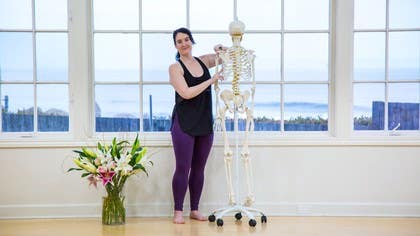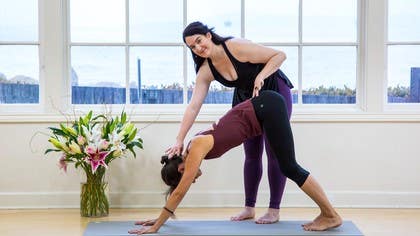Description
Please see attached .pdf below of the rotator cuff muscles.
About This Video
Transcript
Read Full Transcript
Ah, the famous rotator cuff muscles. So you might have heard about these. You usually only hear about them when they go rogue, when they go awry. But let's look a little bit at what these rotator cuff muscles really are. It's actually not one muscle, but four muscles on either side that form a literal cuff around the head of the humerus.
Now, they're lovely muscles, but they're just somewhat puny in nature. And they're not really going to be great for weight-bearing. They're going to be great to hold the head of the humerus in its socket as you do all this wildly mobile stuff. But they're not going to be the best to support the whole body weight on your arms. We actually have four on each side.
We have one that exists above the spine of the scapula and attaches to the humerus. It's called supraspinatus, superior to the spine of the scapula. Then we have one that's on the underside, below the spine of the scapula, and that's called infraspinatus, so inferior to the spine. Now, if we could peek underneath the scapula, we would see subscapularis, kind of like a submarine would dive under. We have subscapularis.
And then we have what's called Terry's minor, doesn't have a cute role, it's just Terry. Terry's minor. Now, all four really are just holding the head of the humerus in its wild movements. But usually, if you have a rotator cuff tendinitis, tear issue, drama, nine times out of ten, it's supraspinatus that's getting the brunt of the oomph. So look how narrow of a space that supraspinatus has to dive into.
It's above the spine of the scapula, it dives underneath to attach to the head of the humerus. I can barely get my fingers in there, not a lot of space. So when you have very little space and a lot of mobility happening, you can run into it and kind of annoy it and aggravate it and irritate it by kind of rubbing inappropriately, get your mind out of the gutter, rubbing inappropriately this muscle around the bone. This causes irritation. There's actually a bursa underneath that acromium, so called subacromial bursa or bursitis when it gets irritated.
You can get tendinitis or supraspinatus can get frayed or weak, worst-case scenario could tear. This is why proper movement of those wildly mobile arms, especially if we're going to start bearing weight on them, becomes key to healthy shoulders.







You need to be a subscriber to post a comment.
Please Log In or Create an Account to start your free trial.